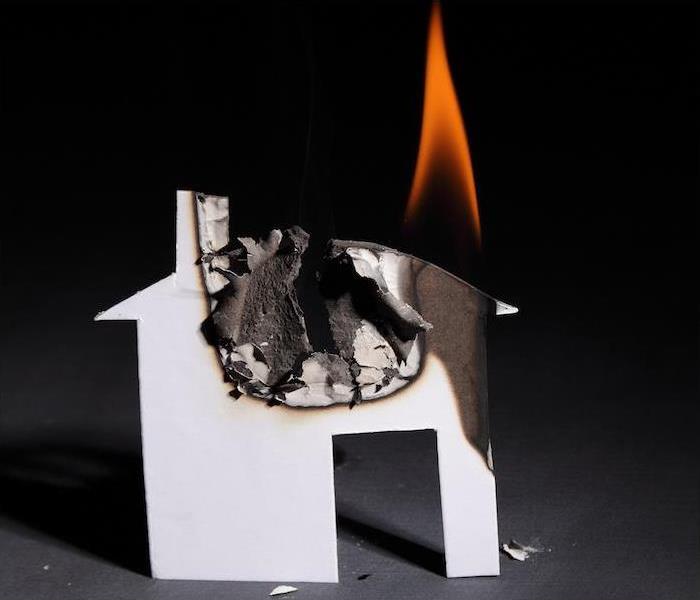Learning How Fires Start Helped Us Learn How to Stop Them | SERVPRO® of Houston County
3/10/2022 (Permalink)
The humble tetrahedron is a triangle lover’s dream—four sides, all of them triangles, all of them equal. And so pointy!
But how could this three-dimensional triangle possibly belong in a SERVPRO blog? Oh, keep reading.
See, fire is represented visually in what’s known as the fire tetrahedron —a four-sided, 3D shape depicting the four things that must be present in any fire.
It takes all these elements working together for a fire to start. And the flip side of that coin is that it takes only one of these elements to be removed for the fire to fall apart. Let’s see it in action.
<h34-things-a-fire-needs-to-live">The 4 Things a Fire Needs to Live
Fuel. Don’t think of this as fuel in the same way you think of gas for your car—think of it rather as what the fire consumes, or what would be gone in the aftermath of a fire. Trees, houses or even candle wax could all be considered fuel sources.
Heat. All these fuel sources have a heat threshold at which they become combustible—let them cross that threshold and they ignite, provided there is a proper amount of…
Oxygen. Fires require a ready supply of oxygen both to ignite and to flame up. Fires lick up the oxygen from the atmosphere, leaving behind air in the vicinity that’s insufficient and dangerous for people to breathe.
Chemical Chain Reaction. The fuel, the heat and the oxygen all start rolling together into a chain reaction that will self-repeat forever until one or more of these foundational elements is stopped, removed or otherwise disrupted.
Cool it. Bringing a thermal balance to the fuel source—that is, cooling it at a rate faster than it’s able to be heated to combustible temperatures—will stop a fire in its tracks. Water is the most common method for doing so. It takes a lot for larger fires, but it works.
Smother it. Cutting off the oxygen supply to a fire causes the same effect that would happen to anything else that breathes—it suffocates. When you cover a fire with a fire blanket or stamp one out with your foot, this is how you’re extinguishing it. It’s also why embers can be reignited by a breeze.
Starve it. There are a few ways to do this, but the essence of it has to do with either depleting or removing the fire’s fuel source. For example: If a fire completely burns the logs and sticks in a fire pit, it will eventually die, because it has nothing else to consume. Similarly, fuel sources can be removed from the path of a spreading fire to create a line of stoppage or separation—this is the case with wildfires, as intentional burns are set around them to stall them while firefighters work on the main blaze.
Interrupt the chain reaction. Gases and chemicals can be added into the air around a fire that are able to chemically disrupt the cycle of feeding and growing. Halon was hailed early on for its efficiency and effectiveness in this area, but its adverse impact on the environment has caused it to become banned from future production, leaving other gases, like those used in certain fire extinguishers, to take its place.
If the fire tetrahedron makes a wreck of your home or business, we’re ready around the clock to help you recover. Contact SERVPRO anytime for fast, thorough cleanup and recovery after a fire.



 24/7 Emergency Service
24/7 Emergency Service
